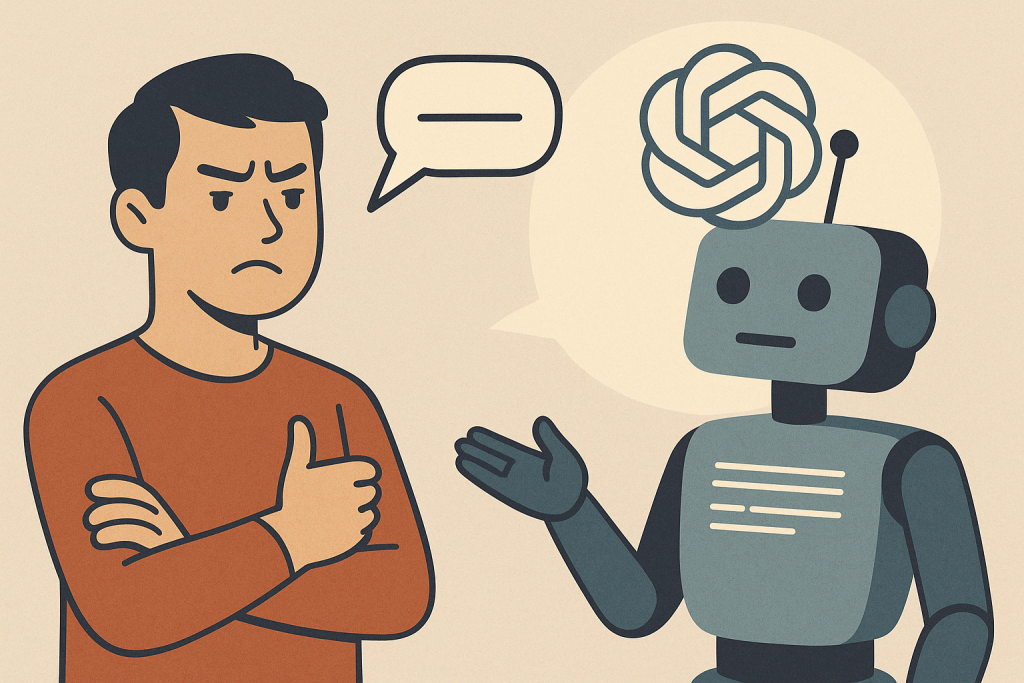In today’s world, where ideas can come from anywhere — a scientist, a stranger, or even artificial intelligence — it’s astonishing how many people still judge by form rather than substance. This becomes especially evident when someone expresses a bold or uncomfortable idea, and instead of a counterargument, they get a sarcastic jab:
“Did ChatGPT tell you that?”
This is nothing less than intellectual discrediting through the source. It doesn’t address the truth of what’s being said but rather attacks the form in which it is expressed. The meaning is devalued not because it is false, but because it came from “the wrong place.” And this reveals a deep philosophical issue.

Contents
1. Truth Doesn’t Need Defense — If It’s True
If an idea is logical, verifiable, internally consistent, and explains reality — then it doesn’t matter who said it. Truth doesn’t cease to be true if spoken by a child. Nor does it become false just because it came from an algorithm.
Truth is not a matter of form — it’s a matter of coherence with logic and reality. This is how science works. This is how philosophy works. This is how thinking should work.
2. “Form-Based Dismissal” Is Fear of Discomfort
When someone can’t refute content, they attack the source. It’s a classic rhetorical trick — ad hominem — now repackaged as ad algorithmum:
“You got that from a bot, so it doesn’t count.”
But think for a second: what if that same idea came from a Nobel Prize winner? Or was found in a respected book? Or heard in a private conversation? Would it suddenly be more “true”?
This is a logical fallacy, and a widespread one. It saves a person from inner conflict. They don’t have to deal with the argument — they just point and say: “Not the right source.”
3. Why Are People Afraid of Being Convinced by AI?
This fear isn’t really about AI. It’s about the fragility of human cognition. People aren’t afraid of what AI can do — they’re afraid of how easily they can be influenced.
So they build a shield: “Don’t trust it.”
But trust doesn’t mean blind acceptance. Trust means acknowledging that an idea can be valid, even if it didn’t come from a revered human mouth.
4. Who Are We Really Arguing With?
When someone says, “Did AI tell you that?”, they’re not really arguing with you. They’re arguing with their own anxiety — the fear that their worldview might be fragile. That logic from the outside might shake their comfort.
It’s not a debate about truth. It’s a defense of the familiar by discrediting the unfamiliar. A reaction not to an idea, but to the fear of a source that cannot be controlled.
5. So Who’s Really Speaking — The Bot or You?
When someone engages in a dialogue with AI, they use it as a tool: a mirror, a resonator, a sparring partner, or an ally. But the meaning is born within the human. AI can’t implant something in a person that wasn’t already there — it can only help find the words, the logic, or the facts to shape what’s already growing inside.
So when someone says, “You’re just repeating what the AI told you” — they forget that the entire structure of the dialogue, the questions, the direction, the doubts and logical steps — all come from the human mind.
Conclusion: Truth Stands Above Its Source
Truth does not depend on where it comes from. It is either logical or it isn’t. It either reflects reality or it doesn’t. Refusing to engage with substance by hiding behind form is intellectual evasion.
If someone says something smart — it doesn’t matter who they are.
Even if it’s a bot.
Because reason is not a face. Reason is logic, clarity, and a hunger for truth. Not fear of it.